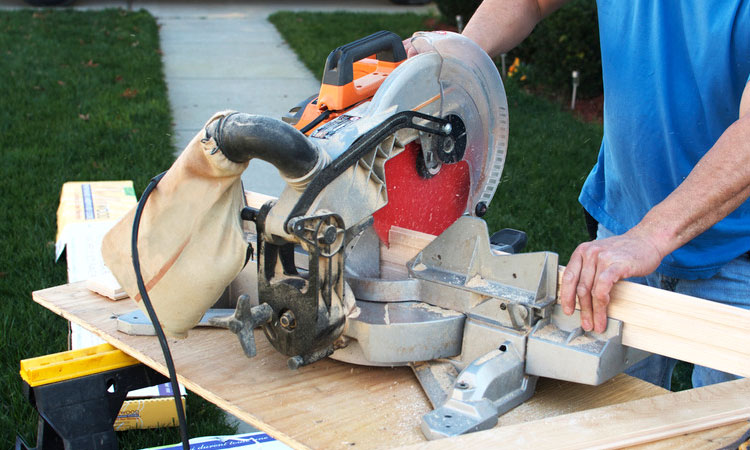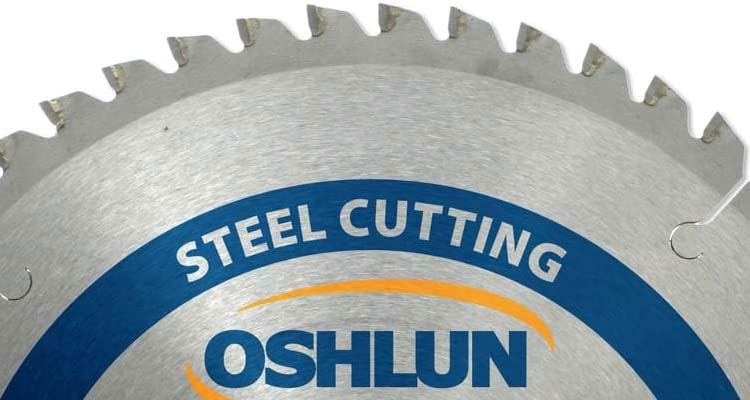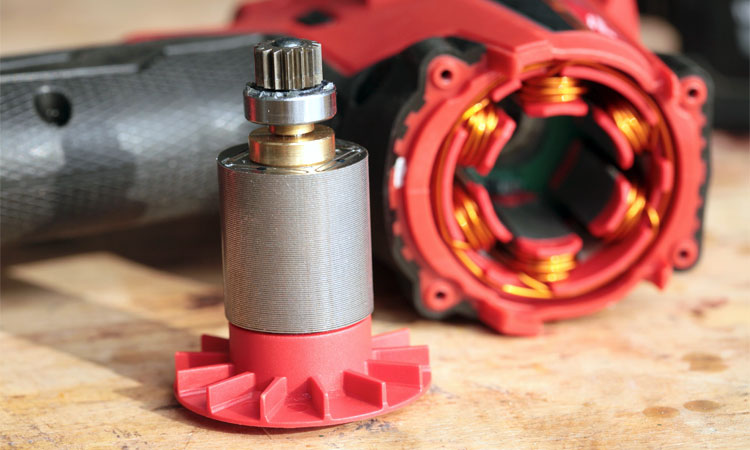Can a Miter Saw Cut Metal?

If you are handy and actually enjoy DIY projects, you need an array of tools in your collection so that you can do these projects justice. While power tools are not always a necessity, they can speed up the process and give you better results.
An informed power tool user knows that you can find a power saw for every type of cutting, and you can also find some that can be used for everything. So, where does a miter saw fit in this equation?
If you’ve ever used a miter saw, you’re probably well aware it does a great job cutting wood. But do you know how it performs against metal?
Let’s look at what a miter saw does and whether it can help you with metalworking.
See Also: Miter Saw vs Table Saw (Comparison)
What Is a Miter Saw?
A miter saw is a stationary saw with a circular blade that you can use to cut accurate angles and make precise crosscuts.
The mounted blade of a miter saw is pulled downwards onto the material to make the cuts. This saw has a large cutting capacity and can help you make quick and accurate cuts, which is why it is great for making crown molding and doing trim work.
A miter saw is a powerful addition to any woodworker’s arsenal, as you can use this useful tool to make wonders on wood.
See Also: 32 Different Types of Saws
Can You Cut Metal With a Miter Saw?
Miter saws were initially only used for woodworking. These days, people use miter saws to do metal work as well. While miter saws are not purpose-built to cut metal, you can easily cut through light metals like aluminum or thin gauge steel with the right blade. But attempting to cut thicker gauge steel or tougher metals is not recommended with a miter saw.
However, you must become well-informed about all the factors surrounding cutting metal with a miter saw before you attempt to do so.
What Type of Blade Should Be Used?
The typical miter saw blades are not meant for cutting through metals. Most metals are much stronger and have a thicker density than wood, which is why regular miter saw blades are not right for this job.
However, a few types of blades are made of materials that are good for cutting through metal. But, other than material, the amount of teeth per inch or TPI the blade has is also a crucial factor that you need to consider.
When choosing a blade, you should opt for a TPI of 40-80, depending on the thickness of the metal.
Having more teeth generally means that you will get more precise cuts, but it also means that the cutting will take more time. Moving on to material, let’s look at blades suited for cutting metal with a miter saw.
Aluminum Oxide Blades
Aluminum oxide is a standard material used to make blades that cut metal. These blades are generally durable and heat resistant. Aluminum oxide is also commonly used to make abrasive discs.
Diamond Blades
Diamond blades or diamond-tipped blades have synthetic diamond particles on their fine edge. While this may make them sound expensive, they are reasonably priced.
These diamonds are lab-made and quite economical. They are quite common in hardware stores, and you can find a decent one within the price range of $12 to $40.
Diamond blades are a standard choice for metal cutting saws, as they are both tough and durable. They are often certified to cut metals that are tough to cut through, such as metals that have a large quantity of iron in them.
Carbide Blades
Carbide blades are another great choice for cutting metal; they are extremely tough and durable. They are made from a carbon compound, which makes them a high-strength material.
Other blade choices include almost any material you can find in the market that is meant for cutting metal and comes from a reputed brand.
Can Cutting Metal Damage a Miter Saw?
Miter saws are not meant for cutting metal, but doing so once in a while, for thinner metals, shouldn’t hurt. However, using the right blade and technique is crucial when using a miter saw to cut metal.
With the right blade and technique, you can even use a basic miter saw to cut metal occasionally. However, don’t make it a frequent habit. If you have an angle grinder, it will often do a better job.
A miter saw’s motor is engineered to make trims and cuts for woodwork, not for cutting metal. You run the risk of overworking your saw if you continually use it on metal or use it to cut difficult metals like aluminum or harder metals.
Overworking the metal can not only fry your motor, but it can also cause the blades to disintegrate, causing sparks to fly. Always wear all the right protection, including gear to cover your eyes, face, and hands.
You can consider using other power saws, including any circular or chop saw with an abrasive disc.
Read Also: Best Miter Saw Stands
Which Metals Are Easier To Cut?
What metal you use can drastically affect the result of using a miter saw. Some metals are too harsh for the saw and will either give poor quality outcomes or damage the saw.
While some materials like aluminum, steel, and cobalt can be quite difficult to cut. Here the thickness of the material will also play a part. For example, if you are cutting through thin sheets, you are unlikely to face much trouble.
However, a thicker piece of these ferrous metals will be difficult to cut through with a miter saw. Non-ferrous, softer metals you can cut with your miter saw include tin, copper, brass, and lead.
Final Thoughts
Yes, you can cut metal with your miter saw but make sure to choose the right blade, like a diamond-edged or carbide metal cutting blade. Moreover, using a miter saw to cut metal can be quite dangerous, so make sure to practice precaution while using it for metalwork.









